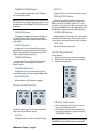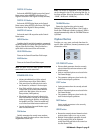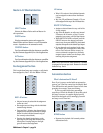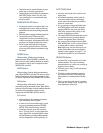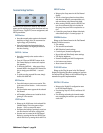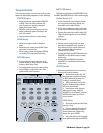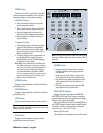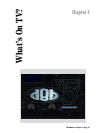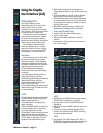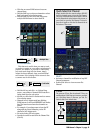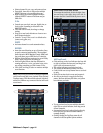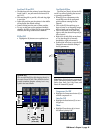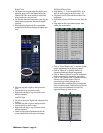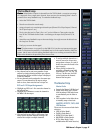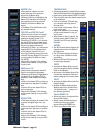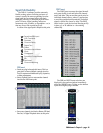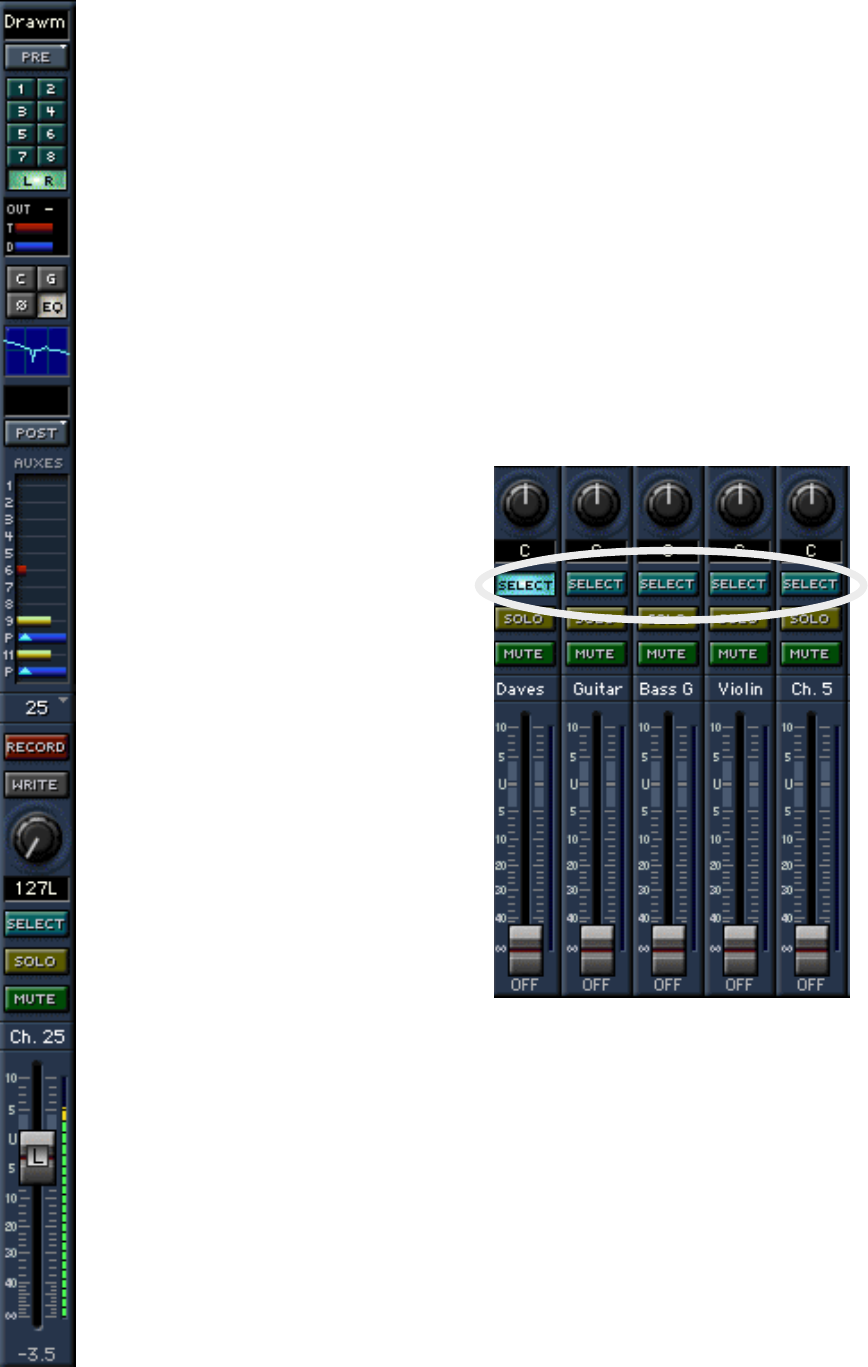
D8B Manual • Chapter 3 • page 42
Using the Graphic
User Interface (GUI)
The Beauty of It…
The Digital 8•Bus provides
exceptional power from the control
surface alone. However, when
combined with an on-screen Graphic
User Interface (GUI) the console offers
yet another facet of audio bliss.
Some features are only available on-
screen and are much easier to perform
on-screen. Yet some control surface
features are more efficient, like multiple
fader moves or inverse fader moves.
The software functions included
herein are definitely in the “I always
wanted to be able to do that” category.
In this section, we touch each control
and parameter—section by section.
The Mouse
All references to mouse clicks imply
left-click on the PS/2 mouse unless
otherwise specified. Certain keyboard
commands combine with mouse clicks
to increase capabilities of the OS and to
help increase speed and accuracy.
• Control-click implies holding the
Control (Ctrl) key down while clicking
on an item.
• Alt-click implies holding the Alt key
down while clicking on an item.
• Shift-click implies holding the Shift key
down while clicking on an item.
• Double-click implies clicking twice
rather quickly on an item.
• Drag implies holding the mouse button
down while moving it across the screen
or across channels.
FADER
• Directly mirrors the control surface fader.
• Click and hold on fader; drag up and
down to adjust fader level.
• The fader level in dB appears just
below each fader.
• When FADER MOTORS is turned off
in the automation section, fader level
can only be adjusted on-screen.
• Fader Bank 2 can be viewed on-screen
along with any other selected Fader
Bank (Ctrl-8 or on-screen Faders button.
• To set fader to unity gain, Ctrl-click
anywhere in the fader throw region.
• Right-click a channel fader and drag across
several adjacent faders to copy its level position to
each.
• To jump the fader to a specific point in the fader
throw, simply click the mouse on that point.
• This fader has no effect on the channel input level.
It controls channel level to bus 1-8, L/R mix, and
the post-fader aux outputs or, if Faders to Tape is
selected, level to tape.
• When BOT (bottom) metering is selected, the
channel meter is displayed next to the fader.
Fader Label (Scribble Strip)
• Double-click in the channel name region.
• Type in a track name.
• Tab to next channel or shift+tab to previous
channel.
• Press enter or click anywhere else on-screen to
exit “track” naming.
MUTE
• Highlighting the MUTE button turns the channel
off in the main mix and bus 1–8 outputs.
• Use the mouse to click the MUTE button and
highlight it.
• Simply click on more MUTE buttons to mute more
channels.
• To select or deselect multiple adjacent MUTE
buttons, click and hold on any MUTE, then drag
across the desired channels.
SOLO
• The function of the SOLO button (PFL, AFL, or
MIXDOWN) is dependent on the solo mode selection
in the control surface SOLO/STUDIO section.



